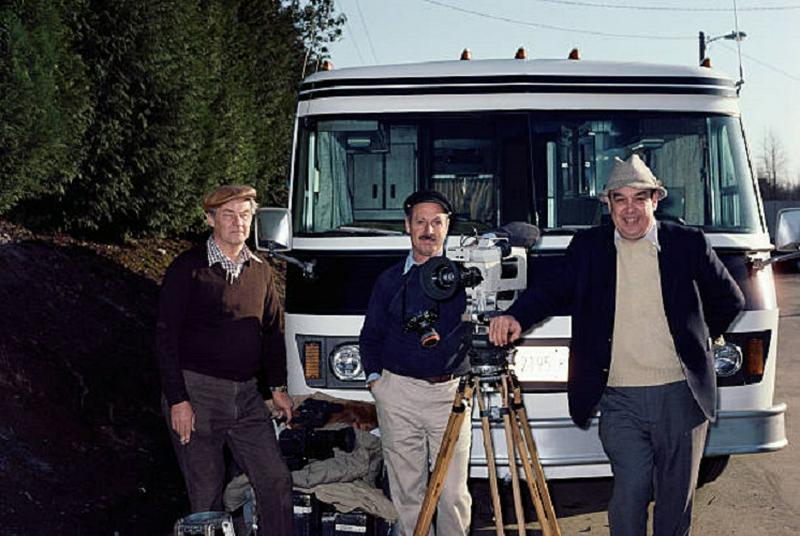Charles Kuralt Shared Stories of Backroads America
By | January 11, 2022

Around the time that Charles Kuralt began his broadcasting career, the world was embroiled in conflict, which would only increase throughout his early years in the news. He took a different approach, creating his "On the Road" segments which Time Magazine called “Two-minute cease-fires.”
Kuralt got an early start in the news. When he was a boy growing up in Wilmington, North Carolina, he wrote a story for a children’s sports writing contest at a local newspaper. This story, about a dog that was running loose on the field during a baseball game, was Kuralt’s first award win. In 1945, after his father moved the family to Charleston, into a house that was the only structure in the area, which was 10 miles south of the city. Here, Kuralt became one of the youngest radio announcers in the country. At the age of 14, he was one of four National Voice of Democracy winners, for which he won a $500 scholarship. Then, in 1951, he was voted “Most Likely to Succeed” in his graduating class.

Getting His Start At CBS
He went to the University of North Carolina at Chapel Hill for college. While there, he was the editor of The Daily Tar Heel. He also had a starring role in American Adventure: A Study of Man in the New World, a radio program. After graduation, as a reporter for the Charlotte News, he wrote “Charles Kuralt’s People.” The column won him an Ernie Pyle Award. In 1957, he started working for CBS as a writer and hosted the Eyewitness to History series. As a journalist for CBS, he traveled the world and had stints as the Chief Latin American Correspondent and as the Chief West Coast Correspondent. In 1967, he created the documentary To the Top of the World when he accompanied Ralph Plaisted during his attempt to reach the North Pole by snowmobile.

Starting To Go On The Road
Around this time, after tiring of the competitiveness among reporters on the hard news beats, he started to try to persuade CBS to let him try something like what he had been doing on the Charlotte News. CBS agreed to let him try it out for three months. This three-month project ended up lasting 25 years. His segment, “On the Road,” became a regular feature in 1967 on The CBS Evening News with Walter Cronkite. Kuralt took to the road in a motor home with a small crew, sticking to the back roads and avoiding the highways. He was in search of America’s people on the back roads because, as he said, “Interstate highways allow you to drive coast to coast, without seeing anything.” By the time he finished his 25-year run, he had worn out six motor homes and completed more than 600 episodes. During these quiet stories, he had also documented stories of hope and stories of ordinary heroes doing extraordinary things. Eventually, the stories of the people he met were published in best-selling books.

Starting A New Sunday Morning Program
On January 28, 1979, he started hosting a new show on CBS: CBS Sunday Morning which he had created with Robert Northshield. On October 27, 1980, he also became a host of the weekday morning show on CBS. On September 28, 1981, Diane Sawyer joined him as a co-host. Although he stopped hosting the weekday broadcasts in 1982, he continued with CBS Sunday Morning until April 3, 1994, having hosted the show for 15 years. He was succeeded by Charles Osgood. Kuralt retired at the age of 60; at the time, he was the longest-tenured on-air individual in the News Division. Over the course of his career, he won three Peabody awards and ten Emmy awards for journalism. In 1980, he won a George Polk Award for National Television Reporting.

After His Retirement
He didn’t completely leave the media though, as he narrated The Revolutionary War, a 1995 TLC documentary, and, in 1997, he hosted a ninety-second broadcast, “An American Moment” three times per week. He also hosted I Remember, a weekly show about news from the three prior decades. Two years after his retirement, he died from complications from systemic lupus erythematosus. After his death, he was embroiled in controversy. He had met a woman named Patricia Shannon while working on a story on Pat Baker Park in Reno, Nevada, and they began a relationship that lasted 30 years and came to light after his death.
A portion of the land along the Roanoke, Tar, Neuse, and Cape Fear ecosystem was named for Kuralt because he dedicated time not only to ordinary people during “On the Road” and CBS Sunday Morning, but also to nature. In 1996, he was inducted into the Television Academy’s Hall of Fame “for his unwavering quest for the positive, the optimistic, and the essential goodness of humanity, and for his sincerity and warmth in creating pockets of serenity and sanity in a jumbled and maddening world.”
